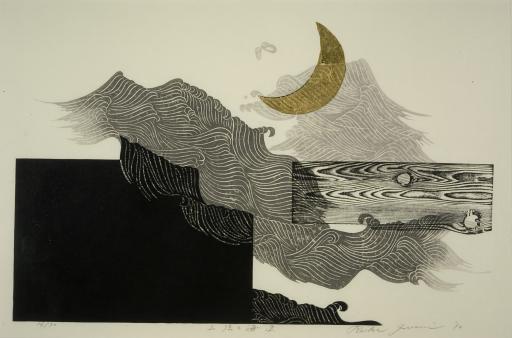Waxing Moon and Ocean "B", Iwami Reika
Artwork Overview
Iwami Reika, artist
1927–2020
Waxing Moon and Ocean "B",
1990
Where object was made: Japan
Material/technique: gold leaf; mica; woodcut
Dimensions:
Image Dimensions Height/Width (Height x Width): 491 x 775 mm
Image Dimensions Height/Width (Height x Width): 19 5/16 x 30 1/2 in
Frame Dimensions (Height x Width x Depth): 26 1/4 x 37 1/4 x 1 in
Weight (Weight): 10 lbs
Image Dimensions Height/Width (Height x Width): 491 x 775 mm
Image Dimensions Height/Width (Height x Width): 19 5/16 x 30 1/2 in
Frame Dimensions (Height x Width x Depth): 26 1/4 x 37 1/4 x 1 in
Weight (Weight): 10 lbs
Credit line: Museum purchase: Lucy Shaw Schultz Fund
Accession number: 1992.0001
Not on display
If you wish to reproduce this image, please submit an image request



